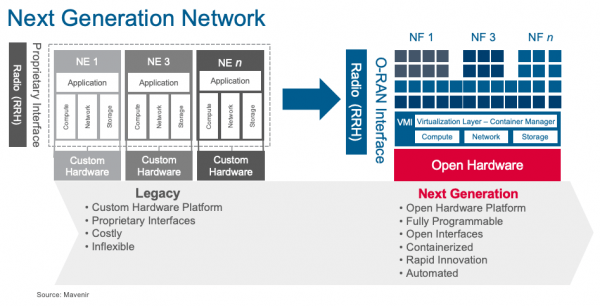THE TOP CHARACTERISTICS OF A NEXT GENERATION NETWORK

What are the top characteristics of a next-generation network? End-to-end automation and cloud-native architecture with open multivendor interoperability.
Next-generation mobile networks will be unrecognizable from those of the 3G and 4G eras. Operators are laying the foundations for an unprecedented upheaval in their architectures and organizational structures, as they move towards automated, cloud-native, programmable networks.
The scale of the migration towards the ‘network of the future’ requires very significant commercial justification. For many operators, learning lessons from the cloud industry will be a matter of survival as mobile data usage rises, but without a parallel rise in usage fees. In a survey of almost 80 mobile operators, conducted by Rethink Technology Research, two motivations dominated the return on investment case for migration to automated, open, cloud-based architectures – radical reduction in total cost of ownership (TCO), and high levels of adaptability, enabling them to adjust their network dynamically to address new services and revenue opportunities.
On average, operators in the survey are targeting TCO reduction of 35% over 6-7 years, plus the ability to address entirely new markets in enterprise and Internet of Things applications. The most important enabler, according to the survey, is end-to-end (E2E) automation, which is considered a top two critical success factor by 38% of operators.
However, the effects of automation will be maximized even more if other changes are embraced in parallel. The most important, according to the respondents, are cloud-native architectures and multivendor interoperability, the latter enabled by open platforms such as O-RAN, which can throw the mobile network supply chain-wide open.
In the survey, almost 60% of respondents considered end-to-end open networks to be essential or desirable for the 5G era. Operators are starting to plan their roadmaps towards future next-generation networks, which will be open, automated and virtualized (see below).



